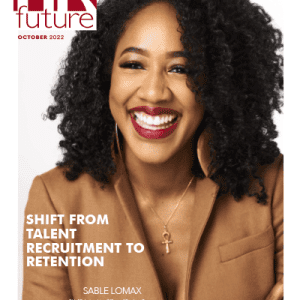Discover the personality traits and qualities that recruiters and hiring managers value the most and find out the “X factor” that’ll win them over.
Recruitment is becoming increasingly automated. Applicant tracking systems do much of the legwork, shortlisting suitable candidates with keywords and algorithms. Even so, there still remains a uniquely human side to the hiring process.
Employers aren’t just looking for the perfect resume, they’re looking at the person behind the page. The one who’ll be the perfect fit for the role and the team. And to do that they consider a complex mix of traits and qualities that combine to create the best candidate for the job.
But what is this secret sauce for success? We created a survey to get some hard numbers to define that je ne sais quoi that makes the perfect professional. Over 200 hiring managers and recruiters gave their opinions on the most important qualities and traits they look for in a candidate.
Here’s what they told us.
First Impressions Count
The hint is in the name. Personal traits and qualities can’t be fully expressed on paper. They need to be assessed in person. And when it comes to recruitment that assessment takes place from the very first second you meet the recruiter or hiring manager.
You’ve heard all the clichés about first impressions. “You don’t get a second chance to make a first impression,” “you can tell a lot about someone from their handshake” and so on. But there’s a strong kernel of truth in these sayings. People do make judgments based on those critical first moments of meeting.
In fact, some studies suggest it takes as little as one tenth of a second to start judging important personality traits like trustworthiness. And our own data backs up the importance of first impressions. An overwhelming majority of 83% of our respondents agreed that it’s an important factor in the hiring decision, with only 1% actively disagreeing.
So it’s essential to make the most of that narrow window of opportunity, which is anywhere up to the first 30 seconds of meeting depending on what study you look at. And the most important thing to focus on in the crucial first seconds? We’d suggest it’s the “niceness factor.” Project confidence and trustworthiness to get off to a strong start.
And it’s backed up by science too. Amy Cuddy, a social psychologist at the Harvard Business School, says her studies reveal trustworthiness and confidence create 80–90% of the first impression. As Cuddy puts it:
We also asked our respondents how they verify their first impressions. This was an open-ended question, so we got a variety of answers but body language and personal appearance were a common theme.
Again, this feeds back directly into the paramount importance of trustworthiness and confidence. Body language and personal appearance are important factors in non-verbal communication, which can form up to 50% of what we communicate to others. And it forms a very primal and fundamental part of how we perceive others.
As one respondent explained:
To sum up, yes they are judging you, but you can nail that first impression by projecting an impression of confidence and trust from the moment you walk in the door. Now for the big one. Once the first impression is complete, what specific qualities do employers look for in a candidate?
Top 10 Most Important Qualities

We asked our respondents what character traits are most desirable in a potential employee. They were able to select up to five qualities and these were their top ten choices.
They were pretty much what you’d expect with the top two choices being loyalty and integrity. Dedication to your employer and displaying honesty and strong moral principles are a must-have for success in the vast majority of workplaces, so no surprises here.
It’s not just enough to prove you’ll be good at the job, you’ve got to prove you’re a good person too. And it’s not just us saying it. A study published in Perspectives in Psychological Science took a deep dive into this very topic analyzing large data sets of HR information to find out which personality traits employers value most.
They also crunched the numbers from the Department of Labor’s O*NET database, a comprehensive aggregator of occupational characteristics and worker requirements information across the U.S. economy.
In both cases they found the most desirable qualities fell under two broad headings. Conscientiousness and agreeableness. So it’s clear that dedication, work ethic and that all important “niceness factor” is key. We’d even go so far as to say that agreeableness is the one “X factor” that everyone needs to boost their chances of success.
We also wanted to examine whether desirable qualities in a candidate were universal, or if they changed depending on the seniority of the role being interviewed for. Here’s what we discovered.

So it seems clear that some traits are considered equally valuable regardless of the seniority of the role. Being a team player, dependability, a proven track record, and being hard-working were held in high regard for all levels. After all, these are traits that every good employee should possess.
But there were a couple of interesting differences. Notably, being detail oriented was considered important by twice as many respondents for entry-level positions compared to senior roles. This makes perfect sense. A defining characteristic of leadership and management is that it takes a “big picture” strategic view, and entry-level employees are more likely to be involved in specific, everyday tasks that require attention to small details.
Another interesting finding was the value placed on being a fast learner which increases from entry-level to junior roles, but then decreases from junior to senior. Seems counterintuitive at first, but it chimes perfectly with the idealized form of a learning curve, the S-Curve or Sigmoid function.
Finally, we spotted a notable difference between the need to be results driven from entry-level to senior roles. Again, perhaps counterintuitive at first but senior and leadership roles do have to have a greater focus on results. The buck stops with them, and they’re the final line of accountability for the results their teams deliver.
But we wanted to dig deeper. It’s all well and good knowing what employers want, but how do they go about verifying if you’ve actually got what it takes?
Putting Personality to the Test
Recruiters know what they want from a candidate. But do they go beyond that gut feeling to make a formal assessment of a potential employee’s personality traits?
Our results revealed that a significant proportion of them do. Around 52% of our respondents use personality tests or psychological profiling techniques to identify desired personality traits in candidates.

Interestingly, we also discovered a gender split in the use of these techniques. Male recruiters were more likely to utilize personality tests, 56% of respondents vs 43% of women. There was also a big split between age groups too. Only 14% of hiring managers aged 56+ would use profiling techniques vs 51% in the youngest cohort aged 24–39.
Conclusion
There remains an intensely human side to the recruitment process and you will be judged on your first impression. But thankfully, getting that first impression right and displaying the most important qualities needed to get the job boils down to one thing. The niceness factor.
Conscientiousness and agreeableness constitute that essential “X factor” that employers look for in a candidate. It really is that simple.
Methodology
The findings presented were obtained by surveying 205 U.S. recruiters and/or hiring managers. Respondents were asked questions relating to what skills they value in candidates and how they verify them. These included yes/no questions, scale-based questions relating to levels of agreement with a statement, questions that permitted the selection of multiple options from a list of potential answers, and questions that permitted open responses.
Sources
- Capps, Rob., “First Impressions: The Science of Meeting People”
- Cuddy, Amy J.C., Wilmuth, Caroline A., and Carney, Dana R. “The Benefit of Power Posing Before a High-Stakes Social Evaluation.”
- Klang, Andreas., “The Relationship between Personality and Job Performance in Sales: A Replication of Past Research and an Extension to a Swedish Context”
- Öngöre, Özgür., “A Study of Relationship between Personality Traits and Job Engagement”
- Paljug, K., “The Personality Traits That Will Get You Hired”
- Palomares, Jennifer. & Young, Andrew., “Facial First Impressions of Partner Preference Traits: Trustworthiness, Status, and Attractiveness”
- Patel, Dipika S., “Body Language: An Effective Communication Tool”
- Sackett, Paul R. & Walmsley, Philip T., “Which Personality Attributes Are Most Important in the Workplace?”
- Willis, Janine. & Todorov. Alexander., “First Impressions: Making Up Your Mind After a 100-Ms Exposure to a Face”
- “Which Personality Traits Are Most Important to Employers?”
This article first appeared on Zety.



























